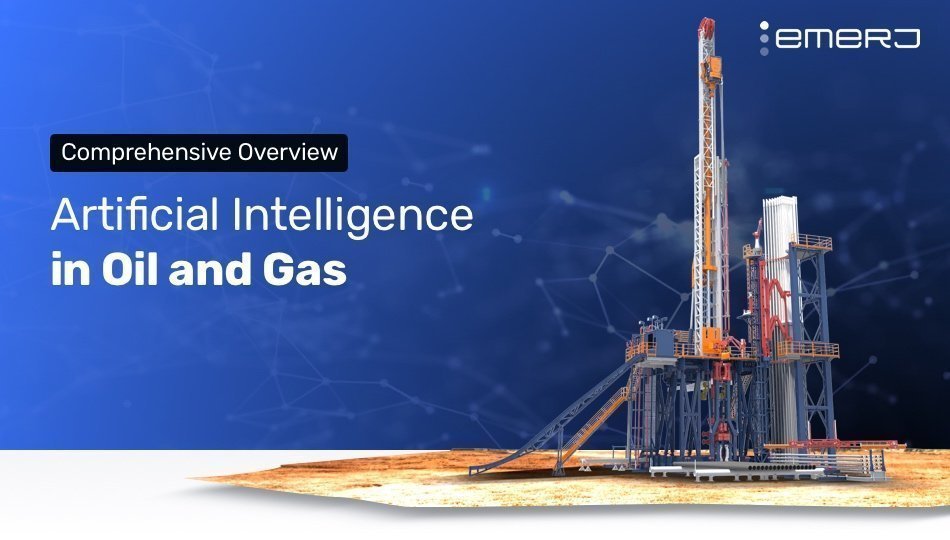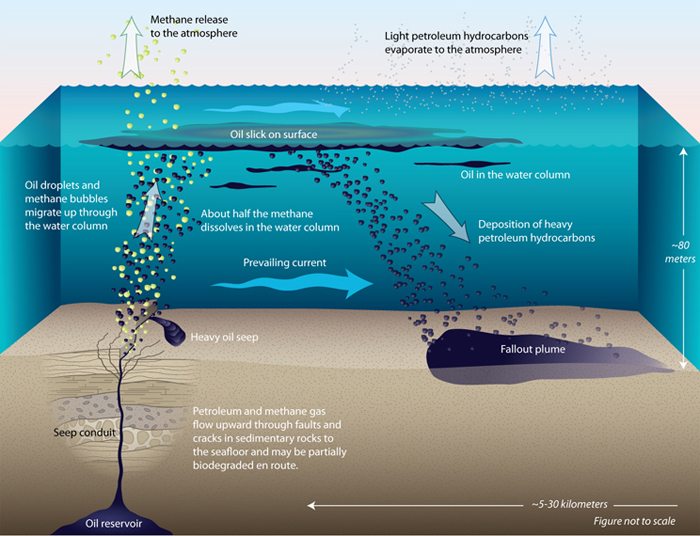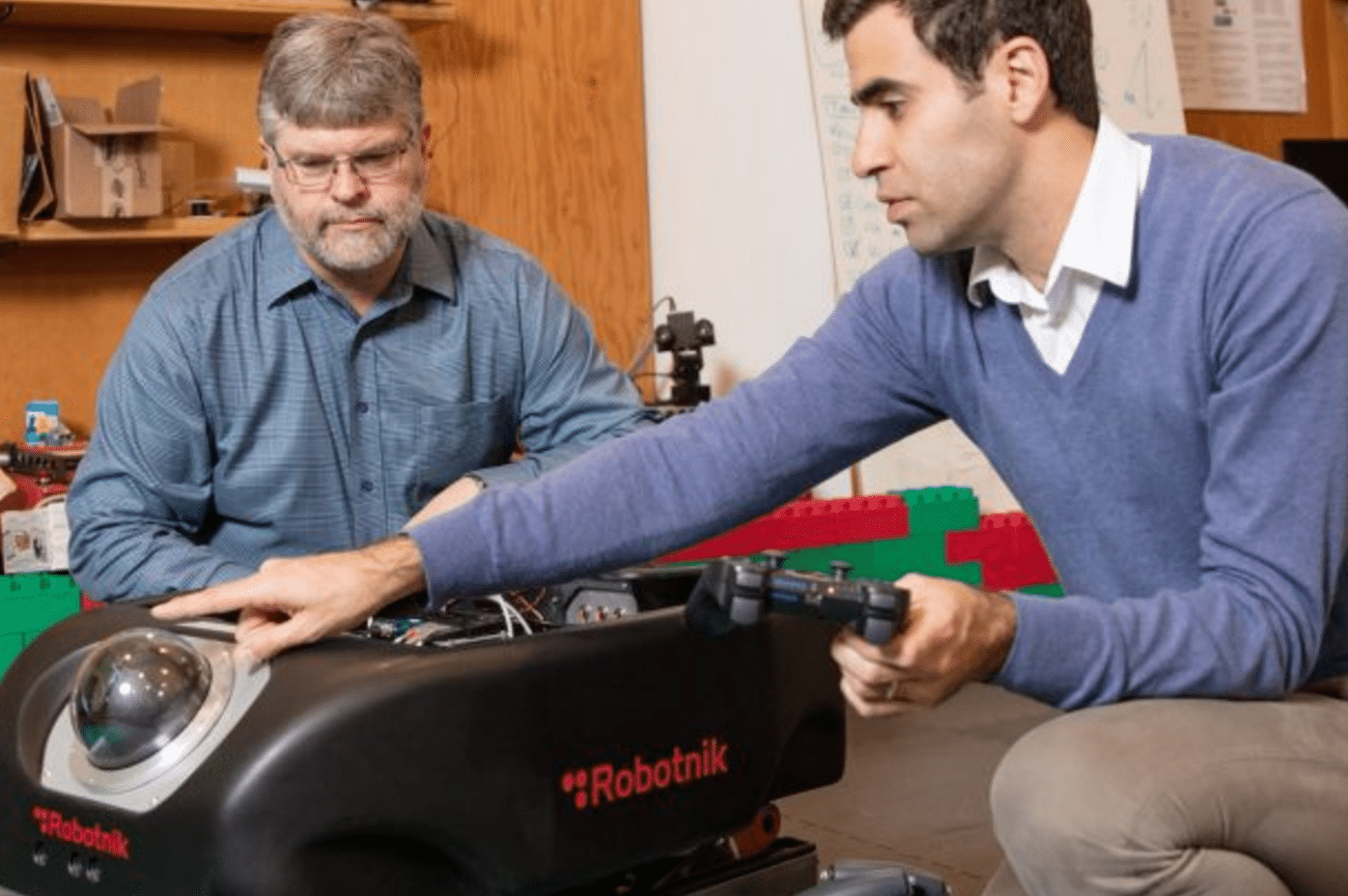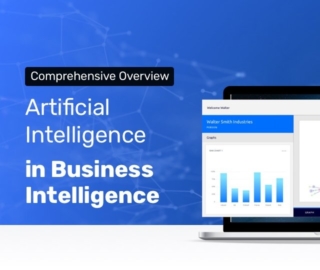
Oil remains one of the most highly valued commodities in the energy sector. Estimates of total energy investment in 2016 tip the scale at approximately $1.7 trillion which represents 2.2 percent of the global GDP. However, as concerns over the environmental impact of energy production and consumption persist, oil and gas companies are actively seeking innovative approaches to achieving their business goals while reducing environmental impact.
Today, AI is helping the oil and gas industry chart its future course. Since no previous sources have provided an in-depth look at the impact of AI among the leading oil and gas companies, we set out in this week’s research to help answer questions that oil and gas leaders are asking:
- What types of AI applications are currently in use by leading oil and gas companies such as ExxonMobil and Shell?
- What (if any) results have been reported on AI applications implemented by leading companies in the oil and gas industry?
- Are there any common trends among their innovation efforts – and how could these trends affect the future of the oil and gas industry?
This article seeks to provide a comprehensive look at applications of AI by the five leading oil and gas companies. Our ranking of companies is based on the Forbes’ 2017 Global 2000 ranking of the world’s biggest public companies.
Through facts and figures we aim to provide pertinent insights for business leaders and professionals interested in how AI is impacting the petroleum industry.
Prior to exploring the applications, we’ll present the common patterns that emerged from our research in this industry.
Artificial Intelligence in Oil and Gas – Insights Up Front
The most popular AI applications from the top five industry leaders currently appear to be:
- Intelligent robots – Robots designed with AI capabilities for hydrocarbon exploration and production, to improve productivity and cost-effectiveness while reducing worker risk (see ExxonMobil and Total below)
- Virtual assistants – Online chat platform that helps customers navigate product databases and processes general inquiries using natural language (see Royal Dutch Shell below)
In the full article below, we’ll explore the AI applications of each company individually. We will begin with ExxonMobil, the #1 ranked company in this industry based on the Forbes’ 2017 Global 2000 ranking of the world’s biggest public companies.
ExxonMobil
Among its ongoing collaborative efforts with approximately 80 universities in the U.S. and abroad, In December 2016, ExxonMobil announced that it is working with MIT to design AI robots for ocean exploration. Brian Williams, an MIT professor and a designer of the AI software that helped create NASA’s Mars Curiosity Rover is a key member of the project team.
While the business advantage of using AI in deep sea exploration may not be immediately apparent, the company aims to apply AI to boost its natural seep detection capabilities. Natural seeps occur when oil escapes from rock found in the ocean floor. An estimated 60 percent of oil underneath the earth’s surface in North America is due to natural seeps. Robots with the ability to navigate these oceanic regions and detect oil seeps can contribute to protecting the ecosystem and serve as indicators for robust energy resources. It is unclear specifically when ExxonMobil’s ocean exploring AI robots are expected to be deployed.

As a founding member of MIT’s Energy Initiative, ExxonMobil has committed a reported $25 million over 5 years to support energy research conducted by MIT faculty and staff. While the company has not published the total amount invested across its 80 university collaborations, we can gain some insight from the following published figures:
- Princeton University: $5 million over 5 years
- The University of Texas at Austin: $15 million
“Our goal is to have these submersibles embody the reasoning of the scientists that program them. You want the explorer to do the science without the scientist there. They need to be able to analyze data, keep themselves out of harm’s way and determine novel solutions in novel situations that go beyond basic mission programming. They need to have some common sense and the ability to learn from their mistakes.” – Professor Brian Williams, MIT

Through its partnership with the MIT Energy Initiative and related efforts, ExxonMobil has made energy efficiency and the exploration of new energy sources a core focus of its business priorities. According to its 2016 annual report, the company has reportedly invested roughly $7 billion since the year 2000 on R&D and “deploying emissions-reducing technologies.” The company does not itemize allocations for these technologies and specifics on AI were not published.
Royal Dutch Shell
In August 2015, Shell announced that it would be the first company in the lubricants sector to launch an AI assistant for customers (an anomaly in terms of applications of artificial intelligence in oil and gas). Normally, customers searching for lubricants and related products must navigate a large database in order to find the ideal product(s) they are searching for. Shell aims to use its avatars Emma and Ethan to help customers discover products using natural language.
The Shell Virtual Assistant functions through an online chat platform through the company’s website. Examples of information that the system can provide include where lubricants are available for purchase, range of available pack sizes and general information regarding the technical properties of specific products.
To provide context, the company claims that its Shell Virtual Assistant:
- Handles over 100,000 data sheets for 3,000 products
- Provides information on 18,000 different pack sizes
- Understands 16,500 physical characteristics of lubricants
- Matches Shell products to 10,000 competitive products
The Shell Virtual Assistant is only currently available in the U.S. and U.K. but also complements four other Shell services including Shell LubeMatch which reportedly provides “over two million product recommendations for Shell customers” annually and is accessible across 138 countries in 21 languages.

We were able to access the virtual assistant on the company’s website. In a note to users posted above the platform, Shell states that the virtual assistant is still in pilot mode and that efforts are ongoing to increase the knowledge of the virtual assistants and to monitor their effectiveness.
At Emerj, we have become increasingly wary of “chatbot” and “virtual assistant” efforts that present an innovative story without a substantive business application. It is difficult to assess the genuine business value of the Shell Virtual Assistant at this time, but we tend to air on the side of caution, and we encourage our business readers to do the same (we have collected a series of chatbots that do appear to be driving business value today, and we highlight them in our “7 chatbot use cases” article).
It behooves any company to present an exciting and innovative front in the press – and chatbots seem to be a “low hanging fruit” for supposed AI applications. This is by no means a warning that we specifically state for Shell – all press-facing technology initiatives serve the purpose of molding perceptions about the company (the goes for every industry). We do our best to dig for the genuine business ROI of AI applications, and we advise our readers to approach applications and press releases with skepticism, bearing in mind the motives of the companies behind them (which do not have to be malicious to be misleading and falsely optimistic).
Similar to Shell LubeMatch, the company is also looking to expand the service to other countries and languages.
Shell’s R&D expenditures in 2016 totalled $1.014 billion. While specifics on AI were not reported, according to its Investor’s Handbook, R&D priorities are focused on “improving the efficiency of its products, processes and operations”, and there is a concentration on developing technologies which support low-carbon energy.

that claims to provide safer and better inspections – at a significant cost savings
In the future, the company reportedly seeks to integrate AI and automation into its facilities. Shell envisions that automated robots will be able to take over routine observational tasks and data gathering currently conducted by human employees. The company reportedly integrated a virtual assistant called Amelia into its business model to more efficiently respond to inquiries from suppliers regarding invoicing.
Shell believes the future of AI in its industry will see a significant increase in unmanned and automated facilities.
China Petroleum and Chemical Corp. (Sinopec)
Sinopec has hinted at the role of AI in moving innovation forward in the oil and gas industry. The company boasts a long-term plan to roll out construction of 10 intelligent plants with a goal of a 20 percent reduction in operation costs.
On the manufacturing front, Huawei (Chinese telecom company) in April 2017 announced a collaborative effort involving Sinopec to design what is described as a “smart manufacturing platform.”
The platform description highlights AI as one of 8 core capabilities of the platform which aims to deliver a centralized method of data management and support integration of data across multiple applications used to manage factory operations.
AI would serve to establish rules and models that would inform how data is interpreted and offer opportunities for identifying valuable insights to improve factory operations. Huawei did not specify a timeline for when Sinopec is expected to fully implement the platform.
Total
Hydrocarbon exploration, the ability to map and identify oil and natural gas deposits beneath the earth’s surface, is a growing area of focus in the oil and gas industry. However, more innovative and environmentally-friendly methods of achieving improved effectiveness and efficiency are needed in the field. Environmental conditions are increasingly challenging for workers conducting hydrocarbon exploration thus technology capable of handling the task while retaining optimal functionality is highly desirable.
In an effort to establish what is described as the “first autonomous surface robots able to operate on oil & gas sites,” Total launched an international competition in December 2013. Total’s ARGOS challenge (Autonomous Robot for Gas & Oil Sites) was narrowed down to five teams hailing from Europe, Asia and South America who were provided with a maximum of three years to finalize their prototypes. For each of the 5 teams, Total provided a maximum of €600,000 (approximately $707,376) to support research and design, and a single prize of €500, 000 (approximately $589,522.50) for the winning robot.
AI was a key component of how the robot would function. Total expected that competitors ensure that their robots were able to deliver reports encompassing real-time data collection related to inspection points (locations where exploration is taking place) and analyses around the effectiveness of the locations of interest.
Total established key goals for the ARGOS robot:
- The ability to carry out inspections, during the day or night, which are currently performed by humans.
- The ability to detect abnormal equipment activity and intervene in an emergency. Examples may include simple equipment malfunctions, or more high risk situations such as gas leaks.
In May 2017, Total selected ARGONAUTS designed by a team from Austria and Germany as its winner. Total retains exclusive intellectual rights to the technology behind the ARGONAUTS robot for a period of five years. No further announcements have been made as to when the company will begin implementing ARGONAUTS.
Within its Exploration and Production segment, Total reports that over half of R&D allocations are focused on improving exploration capabilities; hydrocarbons and robotics are specifically mentioned. Innovation and R&D expenditures for oil and gas activities totaled $689 million in 2016.
(Readers with a specific interest in robotics and vehicles for heavy industry may want to listen to our heavy industry-focused interview with Dr. Sam Kherat on our AI in Industry podcast.)
Gazprom
In June 2017, Gazprom and Yandex (described as Russia’s leading internet company) entered into a cooperation agreement for the implementation of new projects in the oil and gas industry. The two companies plan to tap into AI and machine learning to roll out their prospective initiatives.
Specifically, the collaboration is expected to focus on:
- Drilling and well completion
- Modeling oil-refining strategies
- Optimizing other technological processes
The cooperation agreement reportedly provides flexibility for independent exploration of technologies currently in use in the oil and gas industry and collaborative development and application of projects in R&D. Data sharing and technical support for employee training are also potential points of interest.
“Oil and gas is one of the most exciting industries currently, since it involves massive volumes of data, and any easy solutions for optimizing production and business processes have long since been implemented. This combination, together with significant turnover and high level of technological development, creates good opportunities for securing a major effect from implementing solutions based on machine learning and artificial intelligence, and we look forward to a productive partnership, in the long term.” – Alexander Khaytin, COO, Yandex Data Factory
Time will tell specifically how Gazprom and Yandex will leverage AI and machine learning throughout their various initiatives as specific around implementation have not yet been reported.
Gazprom’s technology development plan appears to be deeply rooted in strategic partnerships. In fact, the company claims that it is taking an active approach to identifying innovative, collaborative opportunities that align with its strategic priorities.
Innovation has certainly been a feature of Gazprom’s media profile, however at this current time, our research provides inconclusive evidence of any AI applications that currently in progress or that have demonstrated some preliminary results.
Concluding Thoughts
Leaders in the oil and gas industry are integrating AI in multiple areas. Reducing the carbon footprint, deep sea exploration of hydrocarbons and implementation of innovative, sustainable energy strategies are driving the pace of evolution in the field.
We suspect that the companies we researched for this article are also implementing lots of business intelligence AI applications – but that these technologies are less frequently mentioned in press (exciting robots and noble environmental efforts are better PR for oil giants than predictive analytics for fuel yields, for example). Nevertheless, we feel that the applications highlighted above should give business leaders a healthy overview of the current AI initiatives among the biggest players in the petroleum industry.
Global energy investment by sector took an interesting turn in 2016. For the first time, the electricity sector pushed ahead of oil and gas sector. However, the oil and gas sector remains at two-fifths of the global energy supply investment.
AI robots are a promising area of interest particularly to help curb the risk of exposure to dangerous working conditions for many employees. While the U.S. has experienced a downward trend of labor related injuries or fatalities in the field in recent years, efforts to improve employee working conditions are a smart investment. We predict that improvements in robotic dexterity in any field (retail, agriculture, manufacturing, etc) are likely to trickle directly to robots tasked with dangerous jobs such as those in oil and gas, and fire / rescue. We’ll be following the robotics field in the years ahead, and continuing to update our listings of innovative robotics vendors.
Among oil and gas companies (who are not generally seen to be AI innovators) we can expect industry leaders to be the early adopters. Big budgets and existing tech talent are necessary to implement robust AI initiatives (particularly for complex robotics programs), and few companies on earth have pockets as deep as the big oil giants. We suspect that relatively smaller oil and gas companies will mostly be following the AI leadership of the giants to currently rule the petrol realm.
Header image credit: Wikipedia Commons







